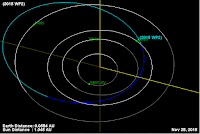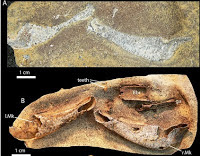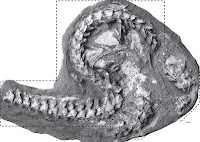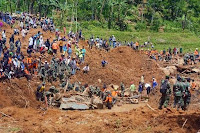A woman has died following a landslide close to the village of Chuwang in Jinnaur District, Himachal Pradesh, on Sunday 29 November 2015. She has been identified as Ganga Devi, a teacher from the village, who was reportedly hit by the landslide while on her way to work. Her body has yet to be found.
The approximate location of the 29 November 2015 Chuwang landslide. Google Maps.
Mountainous areas of Himachal Pradesh (which is most of the state) are notoriously prone to landslides, particularly during the monsoon season, which lasts from July to September, when very high rainfall levels can trigger many such events. Landslides are a common problem after severe weather, as excess
pore water pressure can overcome cohesion in soil and sediments,
allowing them to flow like liquids. Approximately 90% of all landslides
are caused by heavy rainfall.
However November is generally considered a dry month in Himachal Pradesh, and this years has been drier than usual, with many areas experiencing little or no rainfall. Instead this incident has is the latest in a series of events that has been associated by local people with the construction of hydroelectric dams in the area, with claims that irresponsible mountain-cutting and blasting have triggered a number of landslips in the area, several of them fatal.
See also...
 Possible volcanic eruption in Himachal Pradesh State, India. A report in the Times of India
on 6 June 2014 has documented a possible volcanic eruption in the
Kangra District of Himachal Pradesh State, India. The...
Possible volcanic eruption in Himachal Pradesh State, India. A report in the Times of India
on 6 June 2014 has documented a possible volcanic eruption in the
Kangra District of Himachal Pradesh State, India. The... Magnitude 4.4 Earthquake in Himachal Pradesh, India. The United States Geological Survey
recorded a Magnitude 4.4 Earthquake at a depth of 38.2 km, roughly 9 km
north of the town of Gagret in western...
Magnitude 4.4 Earthquake in Himachal Pradesh, India. The United States Geological Survey
recorded a Magnitude 4.4 Earthquake at a depth of 38.2 km, roughly 9 km
north of the town of Gagret in western... Three killed by Himachal Pradesh landslide. Three people were killed by a landslide to the north of Beas Kund (the
source of the River Beas) in Himachal Pradesh at about 3.30 pm local
time (about 10.00 am GMT) on Friday 11 October 2013. Two of the...
Three killed by Himachal Pradesh landslide. Three people were killed by a landslide to the north of Beas Kund (the
source of the River Beas) in Himachal Pradesh at about 3.30 pm local
time (about 10.00 am GMT) on Friday 11 October 2013. Two of the...
Follow Sciency Thoughts on Facebook.









































